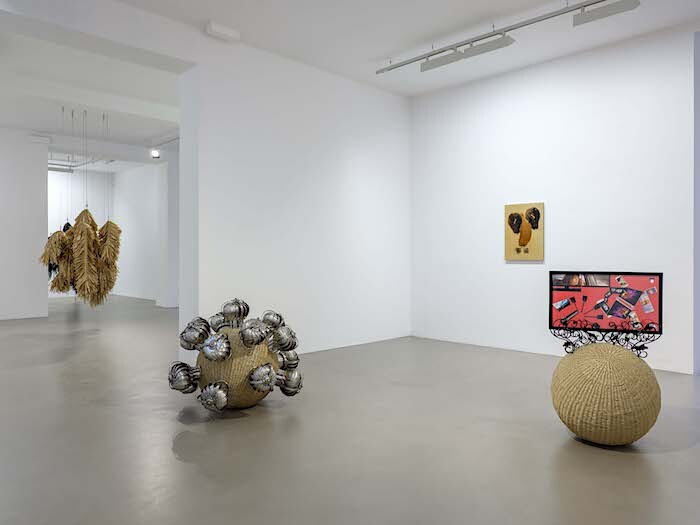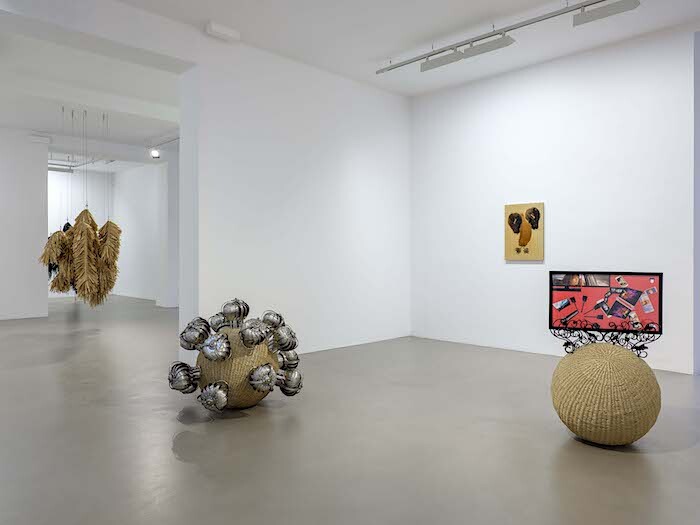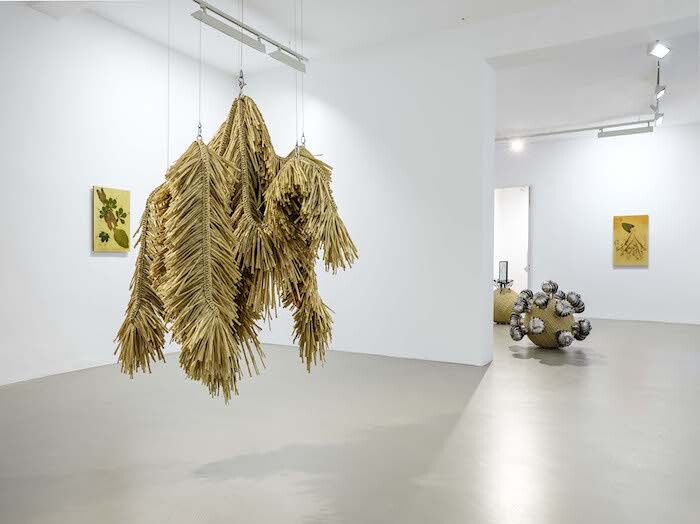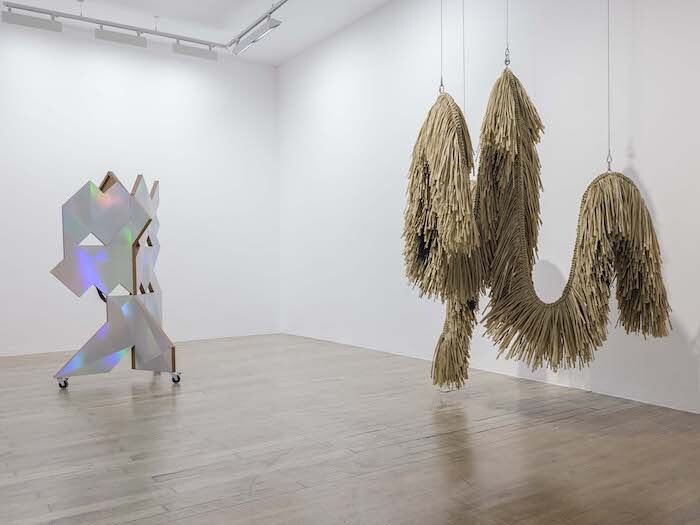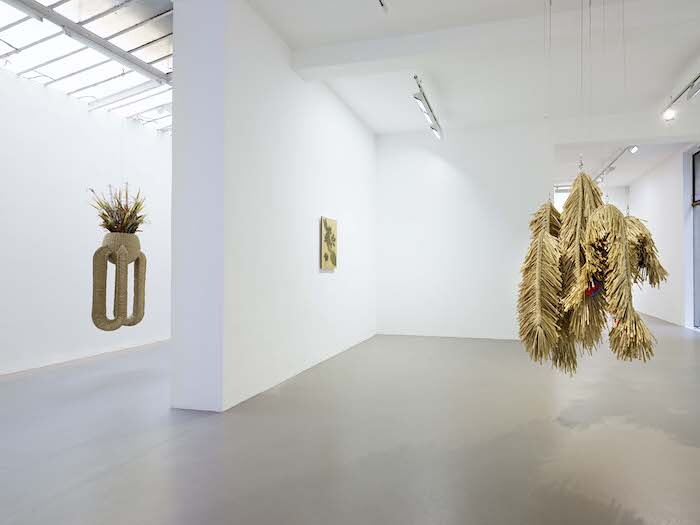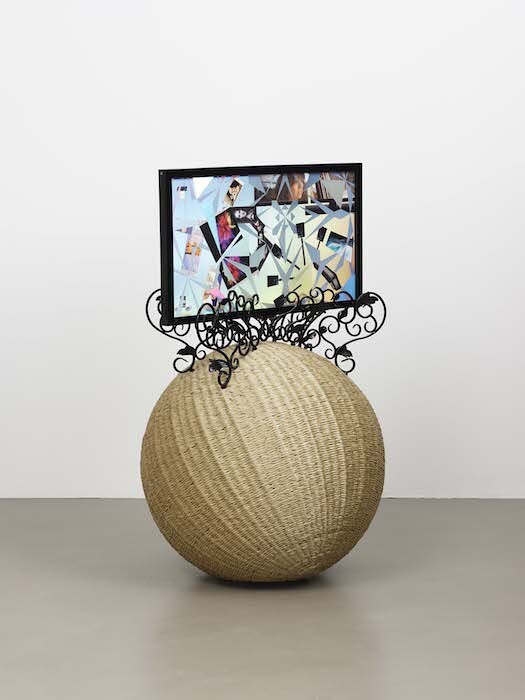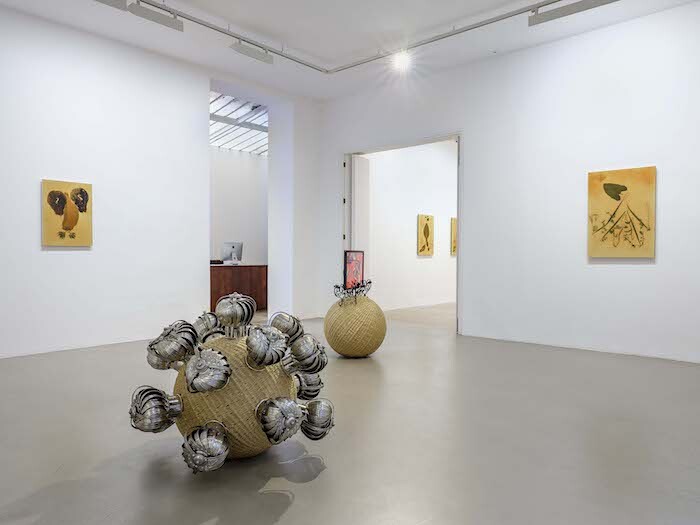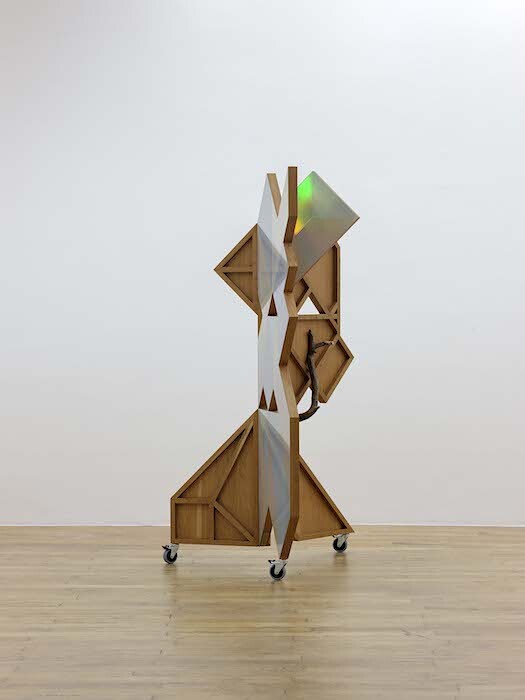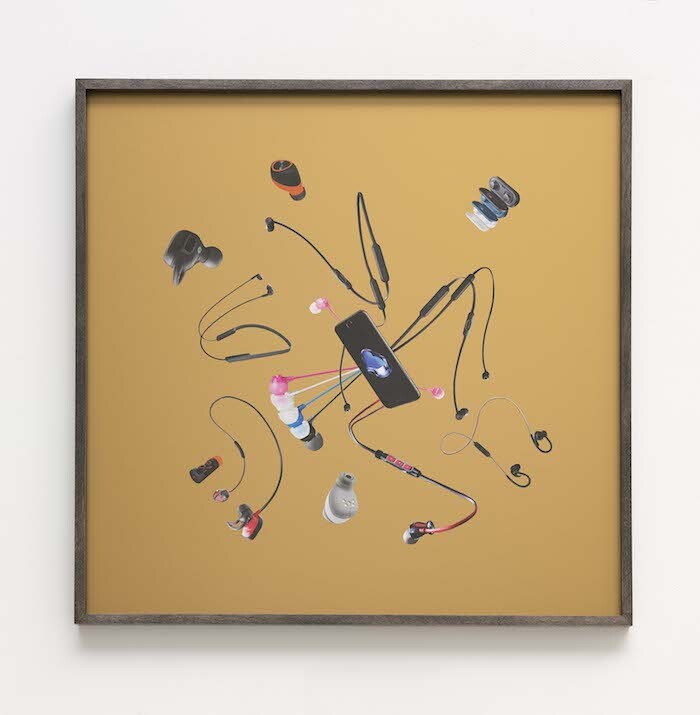Not having a story to tell from the beginning or possibly starting from the middle is how Taoism describes time: continuity without a starting point. Stories abbreviate and expand in “intensiveness,” a term Haegue Yang uses, in dialogue with Jimmie Durham, to describe a mode that, similarly to belief, can exist beyond linear narrative form.1 Yang, who is recognized for her forays into domesticity and response to the assumed neutrality of exhibition spaces, seeks to find a home in the political, constructing spaces of being and belonging in an ever-recurring cycle of unbound histories and narrations.
While in her discourse Yang positions abstraction at the frontier of form, collapsing real and imaginary kinds of value (including that of the human body and technological gimmicks), her studio practice convolutes these tropes. This is the case with the series “Hardware Store Collages” (ongoing since 1994), where indexed images of hardware and quotidian electronic components are released from their functional context and framed as unfamiliar organic assemblages. At Chantal Crousel, Media Markt smartphones and Saturn Bluetooth speakers are the subject of compositions that intensify technological narratives of hybridity. Swaying Television Ball (2017) places a two-sided flat-screen monitor atop an exercise ball made with artificial straw and stainless steel. Cutouts from commercial hardware catalogues cover the monitors’ surface, and these in turn depict portraits of women and animation stills from such films as The Lion King (1997). When fitness training cannot singlehandedly capture one’s focus, the intensified lore of the technosphere might get the job done.
Part of sculpture series “The Intermediates” (ongoing since 2015), Antenna Basket on Rings (2017) and Psychic Turbine Vent Ball (2017) use household industrial components such as TV antennas and wind turbines to adorn crafted rotatory bodies made of artificial straw. The same material reappears in the freestanding and suspended sculptures Serpent Creature, Tinted Serpent Creature, and Triple Tentacles Serpent (all 2017). Drawing on the same narrative that parts technology and craft, progress and folk, the organisms confound formal boundaries by connecting animal mythology, globalized technological expansion, and domesticity. Recalling vernacular shelters, disproportionately large cleaning rags, or even lavish chandeliers, the three works speak to the modern failure to tame processes of hybridization. Contiguous with Triple Tentacles Serpent, the two-sided Faceted Dancing Mask (2017) articulates and sieves the space. Covered by lenticular foil on one side and unclad on the other, the movable folding screen invites visitors to play with views of the gallery and of the boundary-making processes resignified by the artist to foster new kinds of storytelling.
In the 2017 instantiation of the series “Lacquer Paintings” (ongoing since 1994) Yang uses time as her subject matter. Common botanical specimens, such as tobacco leaves, are organized on small wood panels in the tradition of colonial botanical arrangements. Yet, suspicious of material processes of memorialization and their capacity to give meaning to a disordered chronological force field, Yang lets the slow-drying wood varnish capture the dirt, dust, raindrops, and insects present in the original materials and in the making of the work, as traces of the duration of that particular event.
Yang often experiments with narration in varied visual, tactile, aural, and olfactory cues. The title of the exhibition “Quasi-ESP” speaks to the categories by which perception is mediated. As a heightened capability to engage with one’s surroundings, in storytelling extrasensory perception (ESP) confounds linear time with sensory processes. “Quasi”—a reappearing construction in Yang’s exhibition titles—figures as a gesture of incompleteness, of bordering one or several narratives in constant flux. In this view, “intensiveness” renders the gallery a space for abstraction in multiple cadences, intensified by a circuitous studio practice with its own unending narratives.
Jimmie Durham, Haegue Yang, and Mark Welzel, “We can get there!” In Parkett, no. 89 (2011), 88.
